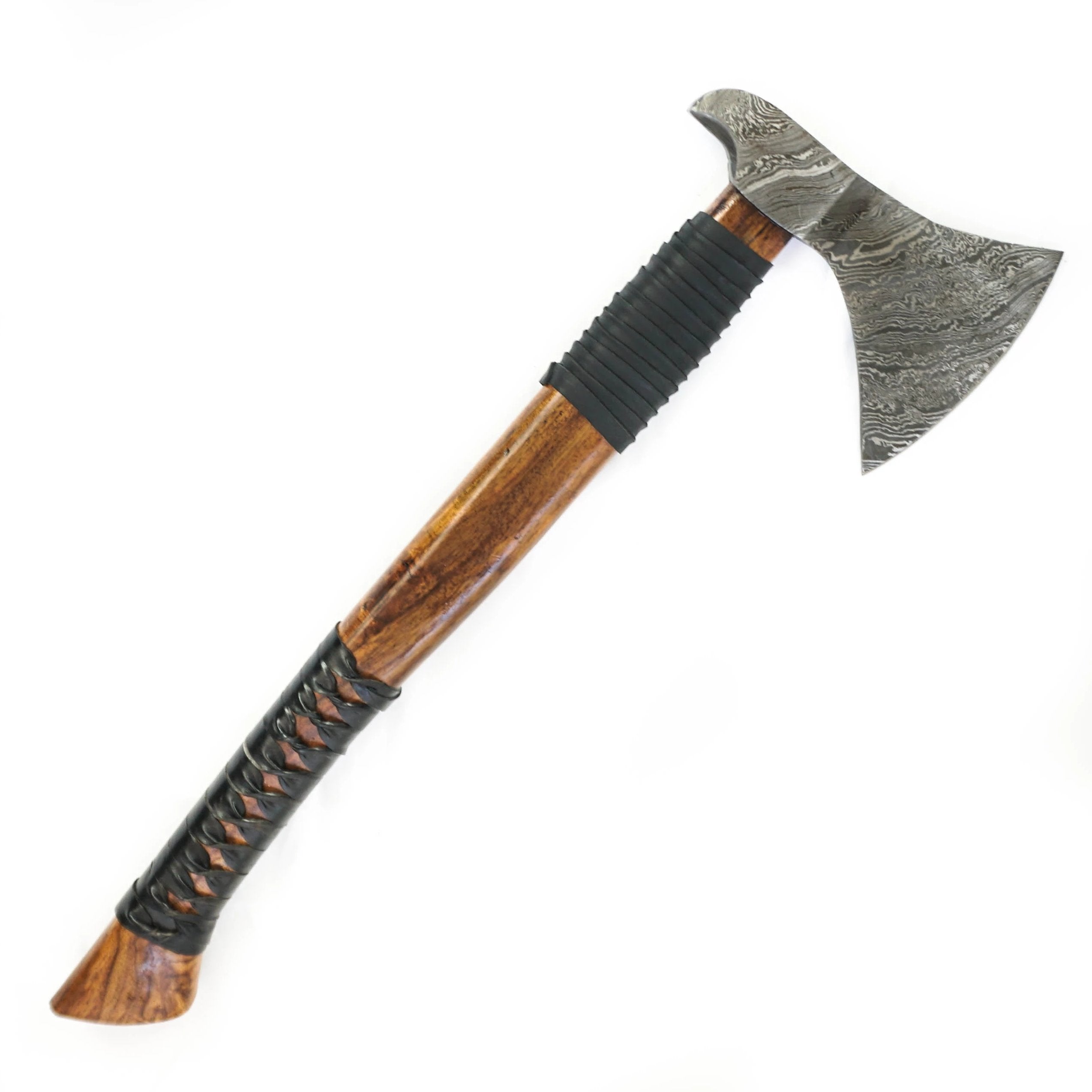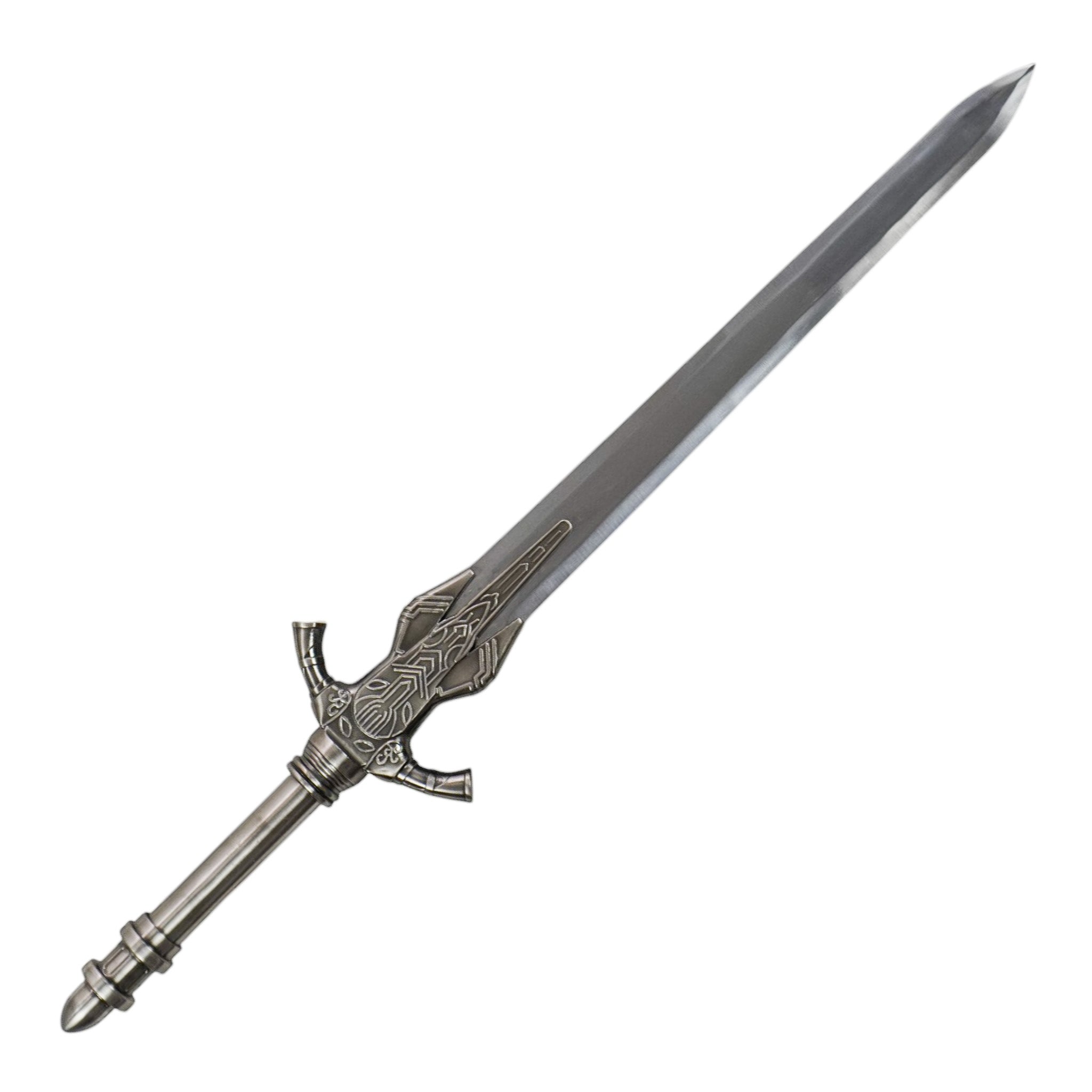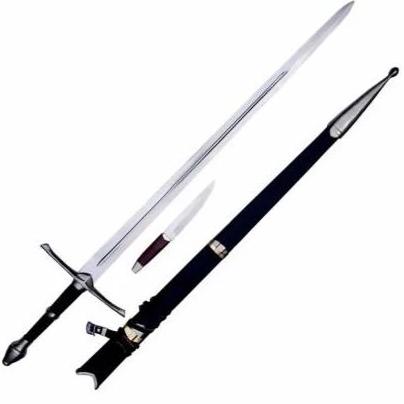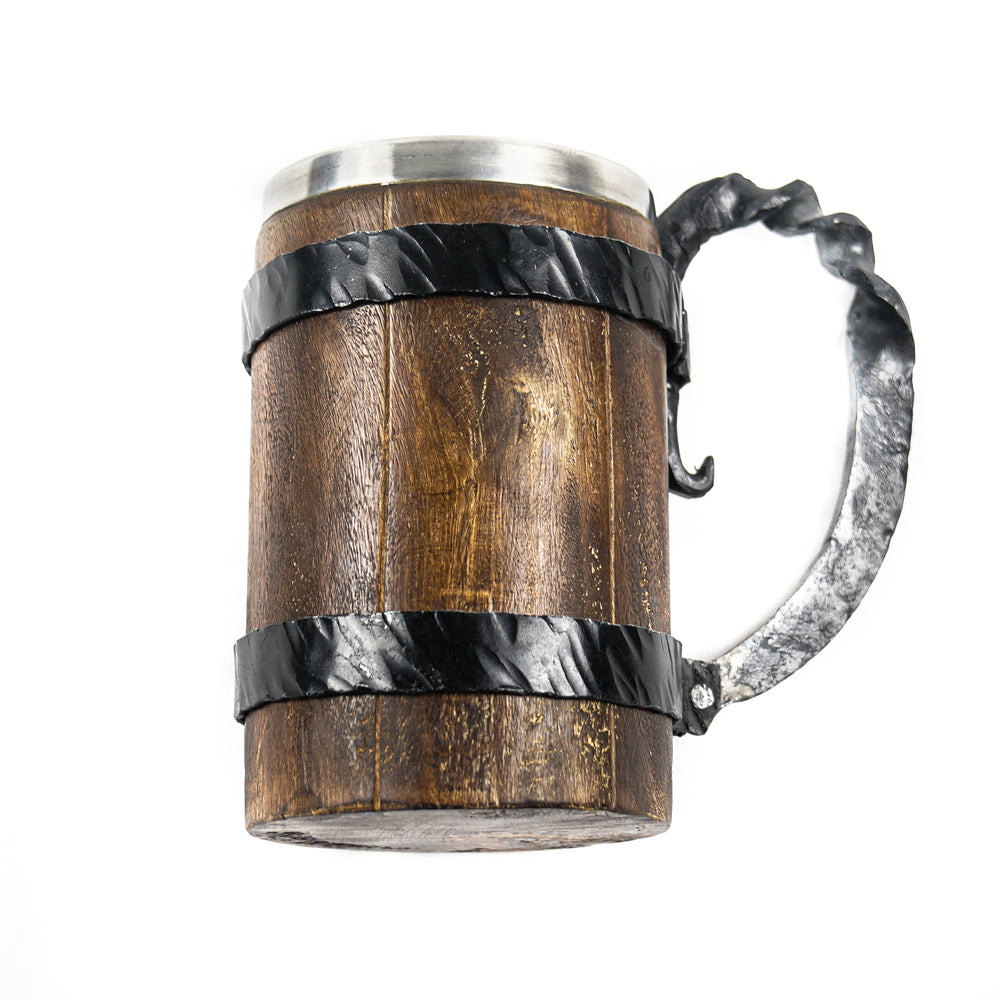Executioner's Sword Description
An executioner's sword, also known as a guillotine sword, is a sword designed specifically for decapitation of condemned criminals (as opposed to combat). These swords were intended for two-handed use, but were lacking a point, rendering them ineffective in battle. They tended to be shorter in length, 31-35 inches, but could measure as long as 55” for more decorative and high profile executions. This sword is 49” in length and is modeled after a famous French guillotine sword. The quillons were short, and mainly straight, and the pommel was often pear-shaped or faceted. In the Middle Ages, decapitations were executed with regular swords. This was not always successful, propelling the development of the executioner’s sword. The earliest known specifically designed executioner's sword dates to 1540. The sword was in wide use in 17th-century Europe, but abruptly fell out of style in the early 18th century. The last executions by sword in Europe were carried out in Switzerland in 1867 and 1868, when Niklaus Emmenegger in Lucerne and Héli Freymond in Moudon were beheaded for murder. When no longer used for executions, an executioner's sword continued to be used as a ceremonial sword of justice, a symbol of judicial power.
Blade Materials
The sword is made from 1095 steel. 1095 steel is the highest carbon steel commonly used in swords. It has a carbon level of .95% which is one of the highest carbon levels for any type of steel. The most common high carbon swords are 1045 steel which only have .45% carbon content in the steel. 1095 steel is known for its ability to maintain an edge and is an incredibly hard steel. 1095 steel typically has a hardness of 56-58 HRC. The problem with 1095 steel is that it is lacks flexibility. Flexibility is critical to sword making so the sword doesn't break on high impact collisions. To increase the flexibility of this steel, clay tempering is used to soften the steel. The clay is thickly painted on the blade to insulates the parts of the blade that we want softened so they cool more slowly during the quenching process. In this case, the clay is painted everywhere except the edge. This clay tempering process keeps the strong and sharp edge of the blade while allowing the rest of the blade to be more flexible. This process optimizes the strength of the blade and maximizes its sharpness creating an incredible strong blade and sharp edge.
Sword Details
Handle Material: Wood
Overall Length: 60", 80", 100", 120", 140", 160"
Rockwell Hardness: 56-58 HRC
Sheath: Leather sheath
Blade Material: 1095 Steel
*Made to order. May take 2-4 months to arrive.















